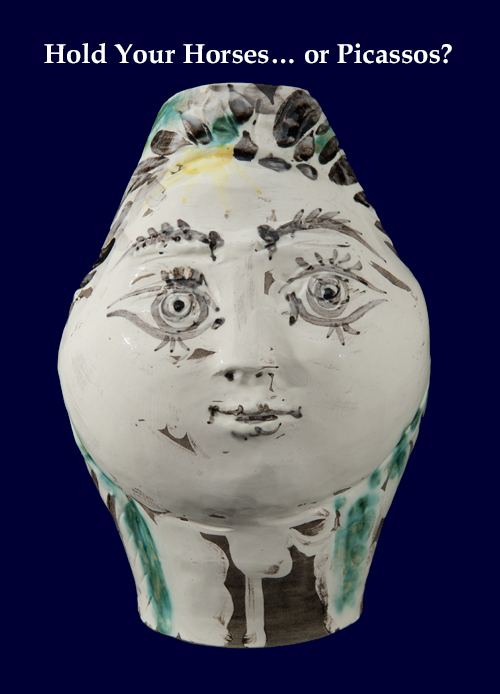Pablo Picasso was in the news (again) last week, this time because of art’s newest hot topic: NFTs. The artist’s granddaughter Marina Picasso and her son Florian announced that they would be hopping on the NFT bandwagon by minting 1,010 digital works based on a Picasso ceramic in their possession. This comes on the coattails of the British Museum’s announcement earlier this month that it would mint NFTs based on twenty of their paintings by the British master J.M.W. Turner.
After Picasso died in 1973, one-fifth of his assets went to his granddaughter Marina. Marina has since sold many of her grandfather’s works, telling the Guardian in 2015 that selling her inheritance is often therapeutic given the turbulent relationship between Picasso and his son Paulo, her father. Many forget that while Picasso is primarily known for his paintings, he also produced thousands of ceramic works throughout his life, ranging from bowls to vases to platters, decorating them with various designs, including faces, birds, the heads of goats, and men on horses. A widely-circulated photo of the Picasso mother-son duo shows Florian posing in their Geneva, Switzerland apartment, holding the large bowl in question. Florian holds the bowl in a way where you can only see the bottom as if he’s hiding a surprise yet to be revealed. The artist’s great-grandson described their decision as an attempt to introduce Picasso’s works to a younger audience, as well as “build a bridge between the NFT world and the fine art world”. The two generated a good deal of publicity. In his capacity as a music producer, Florian got both John Legend and Nas on board to create music to accompany the sale. According to Marina, her grandfather’s bowl dates to 1958 and has never been seen outside the family collection. Agents working on behalf of both Marina and Florian have indicated that both the bowl and an NFT based on the ceramic work will be featured at a Sotheby’s auction this upcoming March. The two Picassos have also announced that the auction proceeds will be donated to healthcare and environmental NGOs. Sotheby’s, however, has said that they have no intention of auctioning off any Picasso NFTs.
Like Rachael Bunyan of the Daily Mail and Jamey Keaten of the Sydney Morning Herald, some have likened Picasso NFTs to something monumental, similar to the Beatles catalogue becoming available on iTunes back in 2010. But I wouldn’t be too sure about that analogy just yet. Even though Marina owns many of her grandfather’s works, she still needs to gain permission from the Picasso estate, known as the Picasso Administration, to do anything with the works. While Marina is one of the Administration’s five members, the two uncles, one aunt, and one cousin that comprise the other four members have granted no such consent. After the estate clarified that it had not given any permission for a digital auction to take place, Marina and Florian’s agents announced that the sale had merely been “postponed”. But simultaneously, Florian Picasso is going through with an NFT sale, but of his own work rather than that of his great-grandfather. This may be a simple family spat for some, but the outcome will definitely have broader ramifications for how existing works can be sold digitally, if at all.

